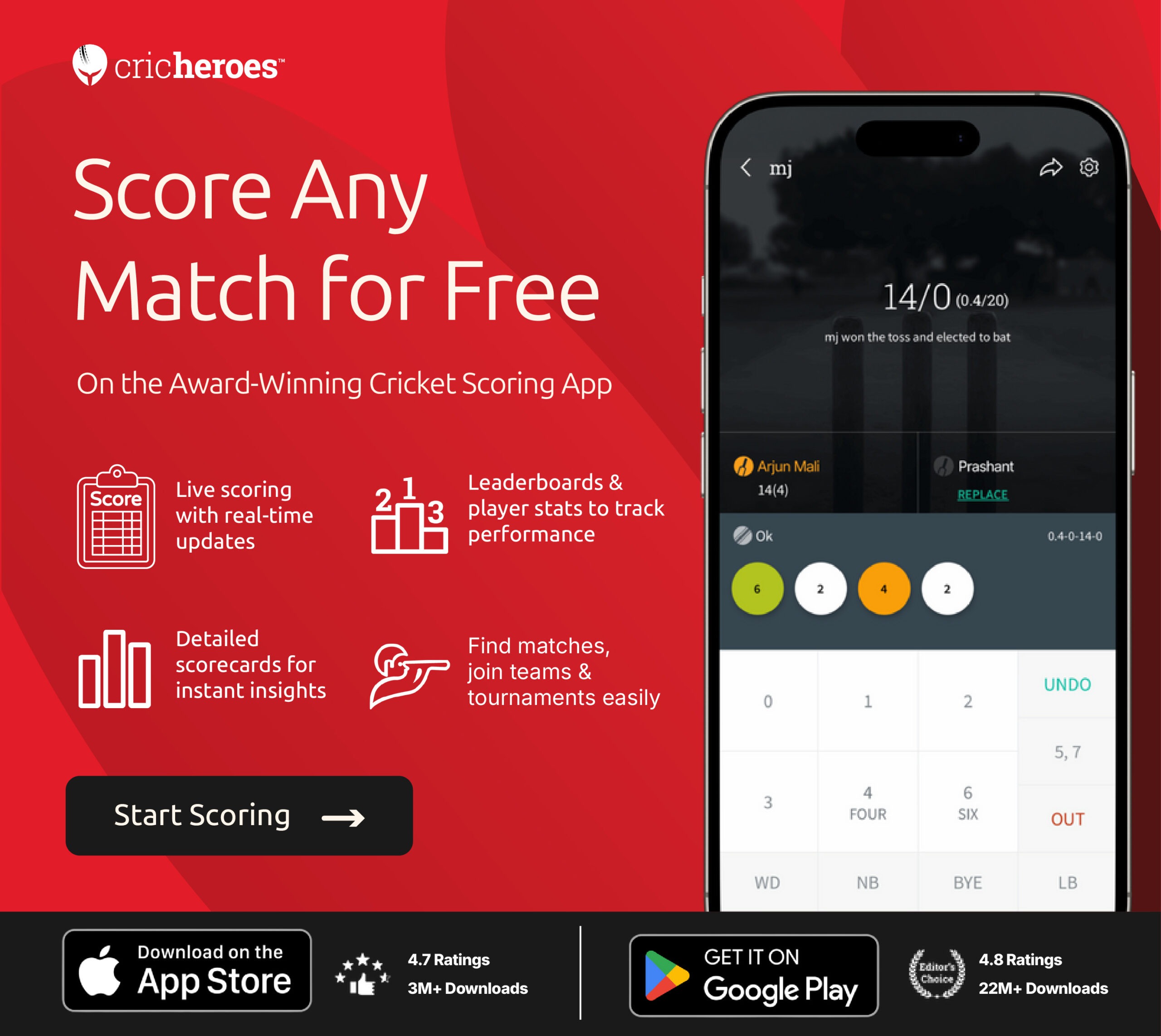The world of cricket has seen many milestones over the years, but one event that stands out in history is the first-ever Women’s ODI World Cup. Played in 1973, it was a groundbreaking moment that not only marked the beginning of women’s international cricket but also set the stage for the future of women’s sports on the global stage.
In this article, we’ll explore the year the first Women’s World Cup was played, the teams involved, how it unfolded, and the incredible impact it had on women’s cricket.
Whether you’re a cricket fan or just curious about the history of women’s sports, this is where it all began.
Also read: Women’s Cricket World Cup Winners List
What Year Was the First Women’s ODI World Cup Played?
The first-ever Women’s ODI World Cup was played in 1973. This tournament took place two years before the inaugural Men’s Cricket World Cup in 1975.
It was a groundbreaking moment. Organized independently and held in England, the 1973 event is considered the birth of women’s international one-day cricket.
Here’s why that matters:
- It showed the world that women could organize, fund, and compete in elite-level cricket without relying on men’s boards.
- It brought women’s cricket into the international spotlight.
Cricket Q&A
Five quick questions. Get a personal tip.
This tournament wasn’t just a sports event. It was a statement.
Who Organized the First Women’s ODI World Cup?
The tournament was made possible by Rachel Heyhoe Flint, captain of the England women’s team and a lifelong advocate for women in sport.
She worked alongside Jack Hayward, a philanthropist who believed in gender equality and financed much of the event. Without his support, the tournament wouldn’t have happened.
Rachel wasn’t just a player — she was a strategist and leader. She pushed against resistance, raised funds, and helped shape the format of the tournament. Her efforts were so impactful that she was later inducted into the ICC Hall of Fame.
No major cricketing body funded this World Cup. The International Women’s Cricket Council (IWCC) helped coordinate, but the heavy lifting was done by individuals who believed in the cause.
Which Teams Played in the 1973 Women’s World Cup?
Unlike modern World Cups, this one didn’t rely on high rankings or qualifiers. Instead, organizers invited teams based on availability and enthusiasm.
A total of seven teams took part:
- England
- Australia
- New Zealand
- Jamaica
- Trinidad & Tobago
- International XI (made up of players from different nations)
- Young England (a development team from the host country)
The teams played in a round-robin format, with each side facing every other team. No semi-finals, no final. The winner was simply the team with the most points at the end.
Who Won the First Women’s ODI World Cup?
The first title went to England, led by captain Rachel Heyhoe Flint.
England won five of their six matches, including the key fixture against Australia, who finished second. Their consistency gave them the edge and helped them lift the trophy.
The final league standings were:
- England
- Australia
- New Zealand
- International XI
- Trinidad & Tobago
- Young England
- Jamaica
England’s performance showed not only skill but preparation and leadership. Rachel’s experience and strategic mind gave them the upper hand.
Key Players & Top Performers of the 1973 Women’s ODI World Cup
Several players made a huge impact during the 1973 tournament, but a few stood out and etched their names into history.
Enid Bakewell (England)
She was the star of the tournament, scoring 264 runs and taking 10 wickets. Her all-round performance played a major role in England’s unbeaten run. Bakewell proved what a complete cricketer looked like.
Rachael Heyhoe Flint (England)
As captain, Rachel scored crucial runs and made smart decisions on the field. But her biggest achievement was off the pitch — making the World Cup happen at all.
Sharon Tredrea (Australia)
Tredrea was among the fastest bowlers in the women’s game at the time. Her pace and control gave Australia an edge in key matches.
These players were not household names then, but their work laid the foundation for every women’s cricketer who came after.
Format & Rules of the 1973 Tournament
The format was simple but effective. Every team played each other once, which meant each team played six matches.
Here’s how it worked:
- Win: 4 points
- Tie or no result: 2 points
- Loss: 0 points
There were no knockout stages. The team with the highest total points after the round-robin matches was declared the winner.
Unlike today’s 50-over matches, games were played with 60 overs per side — the same format used in early men’s ODIs. The matches were also played using red balls and traditional white clothing.
This format kept things simple and allowed organizers to control time and costs more easily.
The Global Impact of the First Women’s World Cup
The 1973 Women’s ODI World Cup did much more than crown a champion. It forced cricket boards and the sporting world to take women’s cricket seriously.
Here’s how it changed the game:
- Proved women’s cricket could attract fans and media attention
- Inspired young girls worldwide to take up the sport
- Encouraged other countries to develop women’s cricket programs
- Set the foundation for future international competitions
This wasn’t just a victory for England. It was a turning point for women’s participation in global sport.
By 1976, just three years later, the Women’s Cricket Association of India was established. And by the 1990s, more countries had developed full women’s teams and structures.
How the 1973 Women’s World Cup Was Different from Today
A lot has changed since 1973 — from equipment and sponsorship to media coverage and prize money.
| Aspect | 1973 World Cup | Modern Women’s World Cup |
| Overs per innings | 60 | 50 |
| Number of teams | 7 | 8-10 (and growing) |
| Live broadcast | None | Global coverage, live streaming, replays |
| Prize money | Minimal or none | Millions of dollars in rewards |
| Governing body | Independent (IWCC) | Managed by ICC |
| Global reach | Limited to a few countries | Watched by millions worldwide |
These changes reflect how far the women’s game has come — but none of it would have been possible without the 1973 tournament.
Pros & Cons of the 1973 Women’s ODI World Cup
Pros
- Historic first: Gave women a global cricket platform years before men’s World Cup started.
- Independent effort: No male governing body involved — showed real initiative and passion.
- Inspired generations: Sparked national women’s teams and cricket development programs globally.
- Set a standard: Established a competitive structure and format for future events.
Cons
- Limited exposure: No live TV or radio coverage. Very little press attention.
- Minimal funding: Players were unpaid and played for passion, not reward.
- Lack of official backing: No ICC involvement meant fewer resources and slower global growth.
- Geographic limitation: Mostly English-speaking countries participated; not fully global.
Even with these challenges, the event was a game-changer and far ahead of its time.
Final Thoughts
The 1973 Women’s ODI World Cup wasn’t just about runs and wickets — it was about breaking barriers. Against all odds, women from across the globe came together to play the game they loved, with no backing, little money, and zero promises.
They made history, not just in cricket but in global sport.
If you’ve ever watched a Women’s World Cup match in recent years, know this: it all started in 1973. The courage, the leadership, the fight — that’s what built today’s women’s cricket.
FAQs
Q: In what year was the first-ever Women’s ODI World Cup played?
A: The first Women’s ODI World Cup was played in 1973.
Q: Who won the first Women’s World Cup in cricket?
A: England won the tournament, led by captain Rachel Heyhoe Flint.
Q: Which teams played in the 1973 Women’s ODI World Cup?
A: England, Australia, New Zealand, Jamaica, Trinidad & Tobago, Young England, and an International XI.
Q: Was the ICC involved in organizing the 1973 tournament?
A: No, the tournament was independently organized with no ICC involvement.
Q: How was the winner decided in 1973?
A: The winner was determined through a round-robin league format. England topped the points table.Q: How many overs were played in each match?
A: Each side played 60 overs, unlike today’s standard 50 overs in ODIs

I am Manan Joshi , SEO All-Rounder at CricHeroes.
CricHeroes is the ultimate Cricket Scoring App and the world’s only true Cricket Network. With more than 4 crore+ registered cricketers using CricHeroes to Live Cricket Scores for their local cricket matches and tournaments, CricHeroes is already the #1 Cricket Scoring App Globally!
We also proudly present “CricHeroes Store” by CricHeroes, a dedicated shop for cricket apparel and accessories, helping players gear up for their game.















